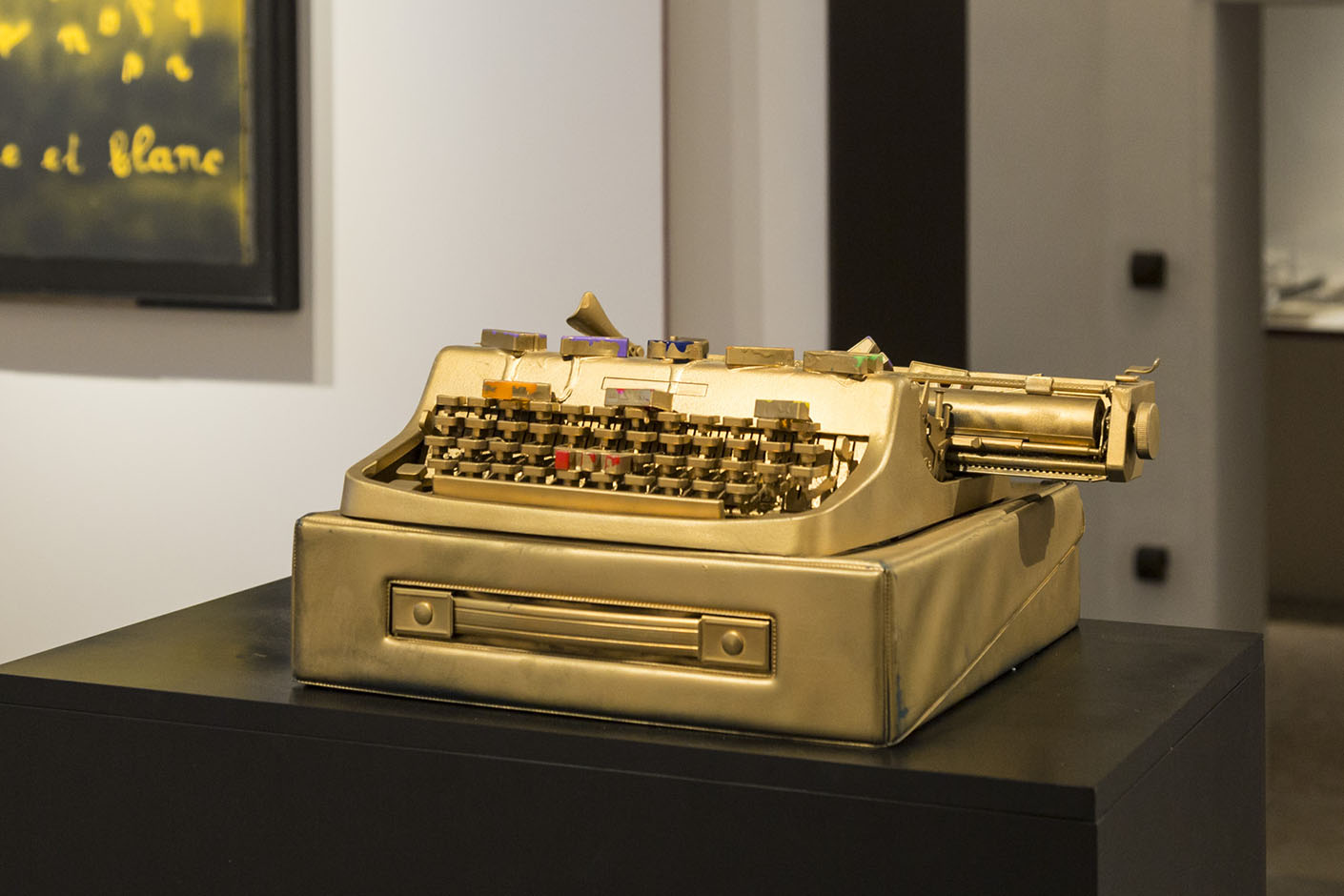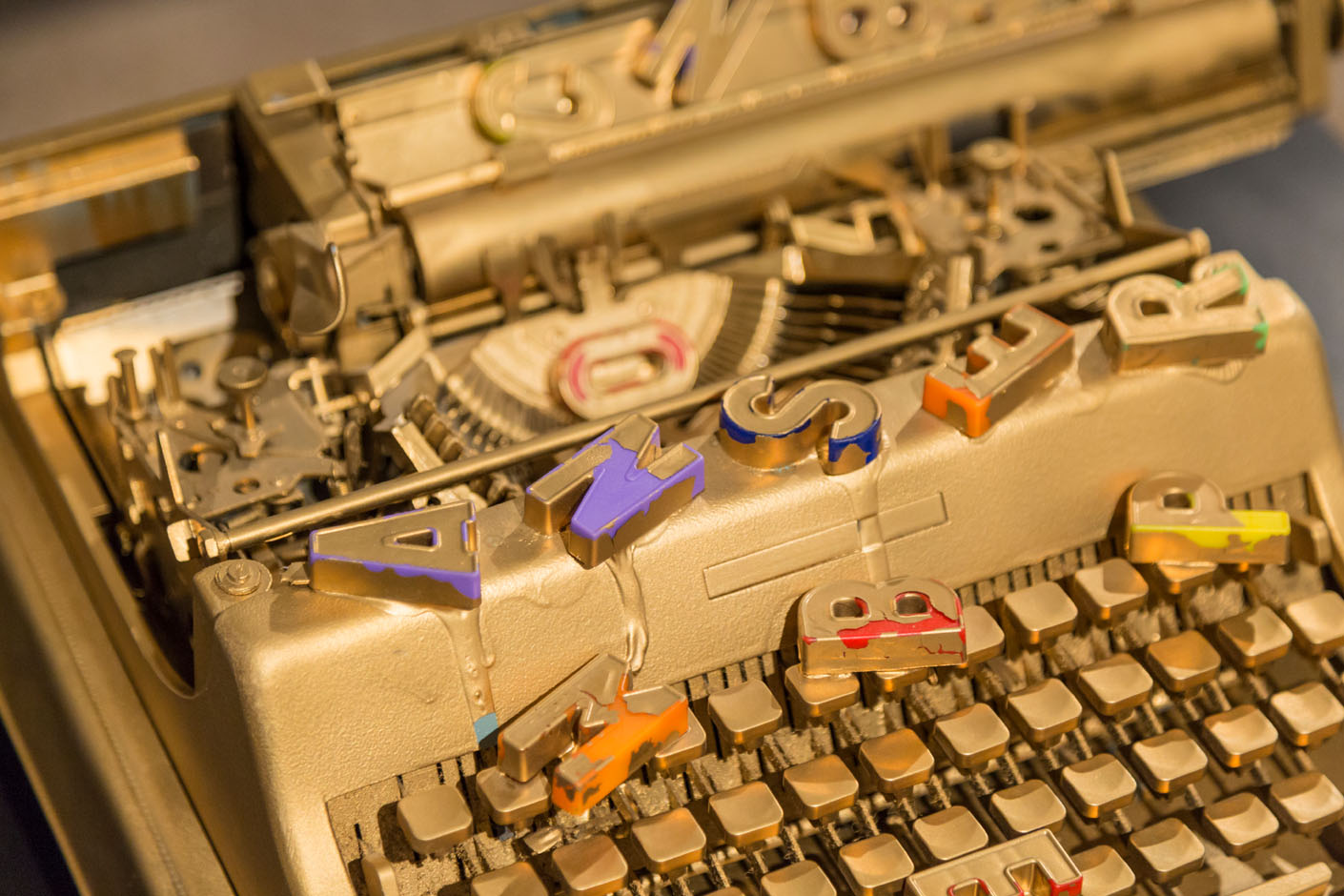Art Collective
Logomotives
The Logomotives group, founded in 1983 by Sarenco, was established as an “international of intelligence” that, during the 1980s, revived the challenge of visual poetry. It is a decade characterized by a general weakening of social and political struggles, witnessing a return to painting with the Transavanguardia movement. Referring to McLuhan’s studies on media as ideological tools, Debord’s observations on entertainement in today’s society and Baudrillard’s research on the simulacra, the Logomotives – which include Arias-Misson, Blaine, Bory, De Vree, Miccini, Verdi and Sarenco – start a work from language, words and the logos, which is what sets speech or spoken words into motion.
The works presented here are a survey of the group: Revolutie and De malen des contestatie by De Vree, Segni nello spazio and Cut-Up A by Verdi show the influence of concrete poetry. Bory with his work, L’éternité, shows the sublimation of the quintessential object used by poets, the typewriter. Blaine presents a dissolution of the alphabet with the work Mon premier abécédaire, while Miccini illustrates in his collage Basta un colpo… the synglossia of visual poetry.
Jean-François Bory lives and works in Paris. Bory’s research starts from the literary field, though in the 1960s, he turned to visual and sound poetry. During this time, Bory published numerous artist books characterized by his careful attention to graphics, layout, and composition. He runs the magazines Approches and L’Humidité together with Julien Blaine. His artistic production focuses mainly on collage and the reworking of typewriters. Parallel to his art, Bory continues to intensely pursue critical and literary activity; he is the author of a book on Raoul Hausmann, of two volumes on Nadar, and a work on drawings by Victor Hugo.




























